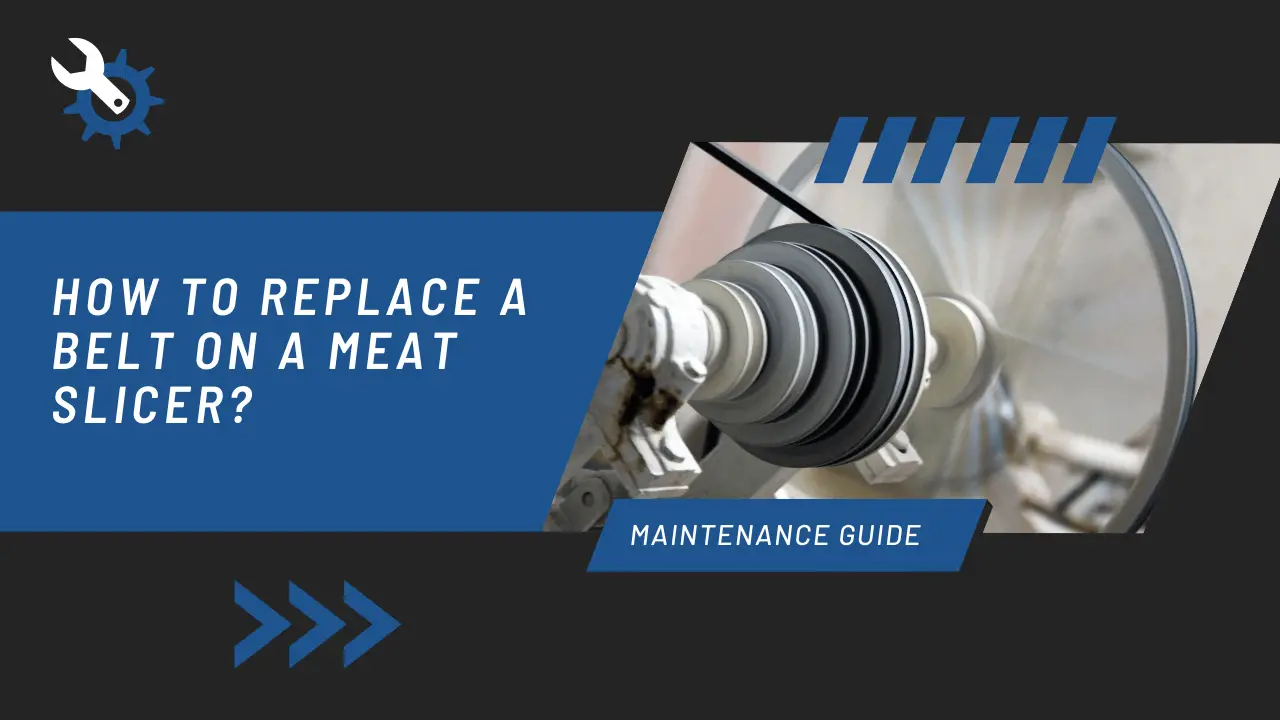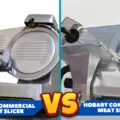Berkel slicers come in various sizes and models, which contribute to their different weights. Classic Berkel slicers, known for their robust construction, tend to be heavier, while modern slicers incorporate lightweight materials and innovative designs. The weight of a Berkel slicer depends on factors such as the base and blade materials, as well as the size and cutting capacity. Smaller slicers are lighter and more portable, while larger, heavy-duty slicers prioritize stability and durability. Choosing the right slicer involves considering your specific needs and finding the balance between weight and functionality.
Overview of Berkel Slicers
Before the weight aspect, have a brief overview of Berkel slicers and their applications:
A. Brief description of Berkel slicers and their applications:
- Berkel slicers are renowned for their performance and reliability in commercial kitchens.
- They are designed to slice through a variety of food items, including processed meats, vegetables, and cheeses.
- Berkel slicers are commonly used in restaurants, delis, and other food establishments to efficiently fulfill customer orders.
B. Importance of weight in slicers’ stability and performance:
- The weight of a slicer is a critical factor in ensuring stability during operation.
- A heavier slicer is less likely to vibrate or move around, resulting in smoother and more precise slicing.
- The weight also contributes to the overall durability and robustness of the slicer.
Types of Berkel Slicers
Berkel slicers come in different types, each catering to specific needs. Here are the main types of Berkel slicers:
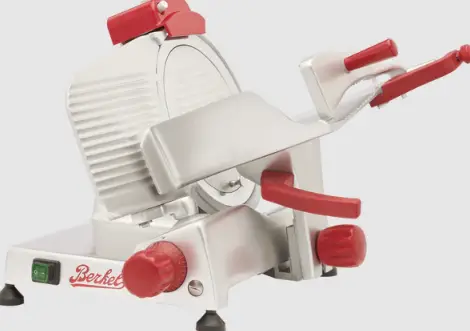
Gravity Feed Slicers:
- Offer a wide variety of knife sizes.
- Available in both manual and automatic models.
- Feature a removable carriage, chrome-plated carbon-steel knives, and an anodized aluminum finish.
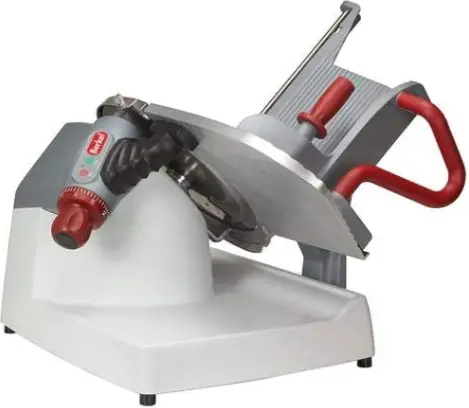
Premier Slicers:
- Equipped with a hardened, stainless steel 13″ knife.
- Feature a one-piece, NSF-approved polymer base, and product table.
- Boast a 1/2 hp motor, index knobs, and start/stop switches located outside of the drip zone for improved cleanability.
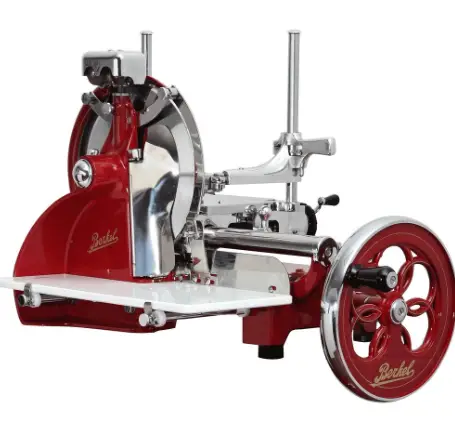
Fly Wheel Slicers:
- Timeless classics available in both hand-operated and automatic feeding options.
- Offer selectable slice thickness for precise cutting.
Factors Influencing the Weight of Berkel Slicers
Several factors contribute to the weight of Berkel slicers. Let’s explore these factors in detail:
A. Construction Materials:
Base Material:
- The material used for the base of the slicer significantly affects its weight.
- Common base materials include stainless steel, aluminum, and cast iron.
- Stainless steel bases tend to be heavier, providing stability and durability.
- Aluminum bases are lighter, making the slicer more portable but potentially sacrificing some stability.
Blade Material:
- The material of the blade itself can influence the overall weight of the slicer.
- Carbon steel and stainless steel are commonly used for slicer blades.
- Carbon steel blades are generally heavier, offering excellent cutting performance and durability.
- Stainless steel blades are lighter, providing ease of use and maintenance.
B. Model and Design:
Classic Berkel Slicers:
- Traditional or classic Berkel slicers tend to have a specific weight range.
- These slicers often feature robust construction and heavy-duty components, resulting in a heavier overall weight.
- The weight range for classic Berkel slicers typically varies depending on the specific model and size.
Modern Berkel Slicers:
- Modern slicers incorporate advanced design features, materials, and technology.
- While some modern models may still have a substantial weight, others are designed to be more lightweight and compact.
- Innovative materials and engineering techniques contribute to the overall reduction in weight without compromising performance.
C. Size and Cutting Capacity:
Small Slicers:
- Compact-sized Berkel slicers, designed for lower volume applications or limited counter space, tend to have a lighter weight.
- These smaller slicers are more portable and easier to handle.
Medium Slicers:
- Medium-sized Berkel slicers offer a balance between cutting capacity and weight.
- They are suitable for a wider range of applications and may have a moderate weight range depending on the specific model.
Large Slicers:
- Heavy-duty, large-sized Berkel slicers are designed to handle high-volume slicing tasks.
- These slicers generally have a heavier weight to ensure stability and durability during intense slicing operations.
How to Use a Berkel Slicer: Step-by-Step Guide
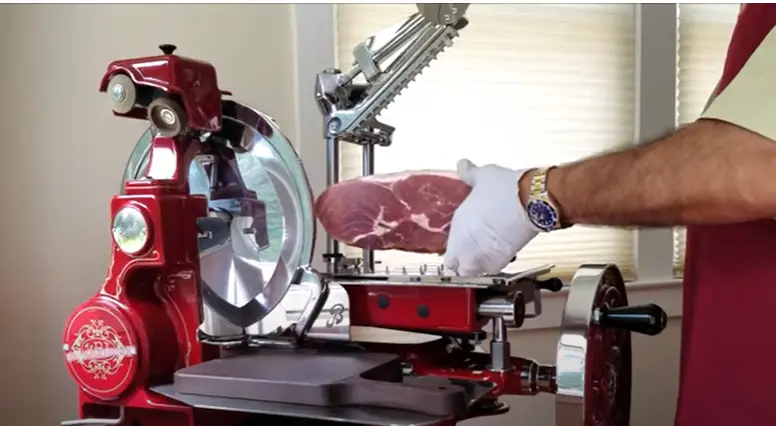
Using a Berkel slicer properly is vital for achieving optimal performance and ensuring safety in your kitchen. Follow this detailed step-by-step guide to make the most of your Berkel slicer:
Positioning the Meat Table:
Pull the meat table back in the loading position.
Standby Position for the Product Holder:
Lift the product holder into the standby position.
Placing the Product:
Place the product to be sliced on the meat table near the operator’s side wall and block it with the product holder, applying slight pressure.
Adjusting Slice Thickness and Activating the Blade:
Adjust the desired slice thickness using the slicer’s settings. Then, activate the blade by pressing the start button.
Initiating the Cutting Motion:
Grip the product holder handle firmly and begin an alternating cutting motion, smoothly moving the product across the blade.
Completing the Slicing Operation:
At the end of the cutting operation, return the thickness adjustment knob to the safety position and pull the meat table back.
Stopping the Blade Motion:
Stop the blade motion by pressing the stop button, ensuring it comes to a complete halt before proceeding with any other actions.
Berkel Slicer – Cleaning and Sanitizing Instructions

Keeping your Berkel slicer clean and properly sanitized is essential for maintaining food safety standards. Follow this comprehensive step-by-step guide to effectively clean and sanitize your Berkel slicer:
Step 1: Prepare for Cleaning
- Unplug the slicer and close the slicer thickness control by turning the index knob clockwise to “0”.
Step 2: Disassemble the Slicer
- Following the manufacturer’s instructions, remove the meat pusher, slide rod, product table, center plate, slice deflector, and sharpener.
Step 3: Pre-Scrape Food Scraps
- Use a suitable tool to pre-scrape any food scraps from the product table, center plate, and slice deflector.
Step 4: Wash the Slicer Components
- Wash the product table, center plate, meat pusher, slide rod, and slice deflector in hot detergent solution.
- Ensure thorough cleaning by using a brush or cloth to remove any residue or stains.
Step 5: Rinse the Cleaned Parts
- Rinse all the cleaned slicer components in fresh, hot potable water to remove any detergent residue.
Step 6: Sanitize the Slicer Components
- Submerge the washed parts in a sanitizer solution following the recommended concentration.
- Allow the components to air dry completely, ensuring sufficient contact time with the sanitizer.
Step 7: Clean the Knife and Other Components
- Clean the knife, ring guard, slicer base, and other components using a fresh detergent solution and a non-abrasive pad.
- Pay special attention to areas where food particles may accumulate, ensuring a thorough cleaning.
Step 8: Rinse and Sanitize the Slicer and Area Underneath
- Rinse the slicer and the area underneath with fresh hot potable water to remove any remaining residue.
- Spray the slicer and the area underneath with a sanitizer solution, allowing it to air dry completely.
Step 9: Reassemble the Slicer
- Following the manufacturer’s instructions, reassemble the slicer components in the correct order and position.
Step 10: Final Checks and Ready for Use
- Plug in the slicer and ensure it is properly connected and functioning.
- Perform a final inspection to confirm all parts are correctly assembled and in working order.
Best Berkel Meat Slicer to Buy
When it comes to choosing the best Berkel meat slicer, two models stand out for their performance and features.
Berkel Manual Gravity Feed Slicer – 12″ Blade – Meat Slicers – 827A (Best Overall)
- Features a 12-inch blade: The 12-inch blade offers a generous slicing capacity, making it suitable for various food items.
- Fine-tuned adjustment for precise slicing: This model allows you to finely adjust the thickness of your slices, ensuring precision in your cuts.
- Stainless steel body for durability: The stainless steel construction ensures durability and longevity, even in demanding commercial environments.
- Ideal for commercial use: The Berkel Manual Gravity Feed Slicer 827A is designed to meet the needs of commercial kitchens, where consistent and reliable performance is crucial.
- Cost considerations for home kitchens: While this slicer offers exceptional performance, it may be on the higher end of the price range, making it more suitable for commercial establishments.
Berkel Red Line 220 Food Slicer, Red, 9″ Blade, Electric Food Slicer (Best for Home Kitchen)
- Smaller size with beautiful red accents: This slicer is designed to fit perfectly in home kitchens, with its compact size and attractive red color accents.
- Offers most features found in commercial models: Despite its smaller size, the Berkel Red Line 220 Food Slicer incorporates many features typically found in commercial-grade slicers, ensuring high-quality performance.
- Millimeter-based thickness adjustment: This model provides a millimeter-based thickness adjustment mechanism, allowing home cooks to achieve precise slice thicknesses.
- Suitable for most home cooks: With its user-friendly features and convenient size, the Berkel Red Line 220 Food Slicer is an excellent choice for home kitchens, providing efficient slicing capabilities.
FAQs
Are Berkel slicers heavy?
Berkel slicers are commercial-grade meat slicers designed for larger kitchens. They tend to be heavy and may not be suitable for kitchens with limited space.
How do I clean a Berkel slicer?
Follow these steps for cleaning your Berkel slicer: unplug the slicer, remove components, pre-scrape food scraps, wash the parts in hot detergent solution, rinse in hot water, sanitize and air dry the parts, clean the knife and other components, rinse the slicer and area underneath, sanitize and air dry the slicer.
Which Berkel slicer should I buy for my home kitchen?
For a home kitchen, the Berkel Red Line 220 Food Slicer is a great choice. It offers most features of a commercial model, is smaller in size, and comes in a stylish red design.
Conclusion:
The weight of Berkel slicers plays a significant role in their stability, performance, and overall usability. Factors such as construction materials, model and design, as well as size and cutting capacity, contribute to the varying weights of these slicers. Understanding the impact of weight allows users to make informed decisions when selecting the right Berkel slicer for their specific kitchen needs. Whether opting for a classic, heavy-duty model or a modern, lightweight option, finding the perfect balance between weight and functionality ensures optimal slicing results. So, consider your requirements, explore the available options, and enjoy the precision and efficiency that Berkel slicers bring to your culinary endeavors.
Key Notes and Important Points
- Berkel slicers are heavy and primarily designed for commercial kitchens.
- Gravity Feed, Premier, and Fly Wheel are the main types of Berkel slicers.
- Follow the step-by-step instructions for safe and efficient usage of a Berkel slicer.
- Proper cleaning and sanitizing are essential to maintain a hygienic slicer.
- Recommended models include the Berkel Manual Gravity Feed Slicer (12″ Blade) for commercial use and the Berkel Red Line 220 Food Slicer (9″ Blade) for home kitchens.
References And Citations:
Here are some suggested external links with corresponding anchor text:
- Cleaning and Sanitizing Meat Slicers – An informative fact sheet from the USDA that outlines proper cleaning and sanitizing procedures for meat slicers.
- Choosing the Right Commercial Meat Slicer – A guide that offers insights and tips for selecting the right commercial meat slicer, including considerations for Berkel slicers.
- Home Kitchen Slicer Buying Guide – An article that provides a buying guide for home kitchen slicers, including recommendations for Berkel slicers suitable for residential use.

Mario Batali is a renowned author, food enthusiast, and passionate chef who has dedicated his life to exploring the world of culinary arts. With a love for sharing his knowledge and experiences, Mario has become a prominent figure in the food blogging community, inspiring countless readers with his creativity and expertise.
In addition to his culinary prowess, Mario Batali is also a talented writer with a flair for engaging storytelling. He launched his own food blog to share his recipes, cooking tips, and personal experiences in the kitchen. Over time, Mario’s blog gained a loyal following of food enthusiasts who appreciate his unique approach to cooking and his dedication to using only the finest ingredients.
Mario Batali’s passion for food and his commitment to sharing his knowledge with others have made him a true inspiration in the world of culinary arts. Through his blog, cookbooks, and public appearances, Mario continues to spread his love of food and the joy of cooking with his ever-growing fanbase.


